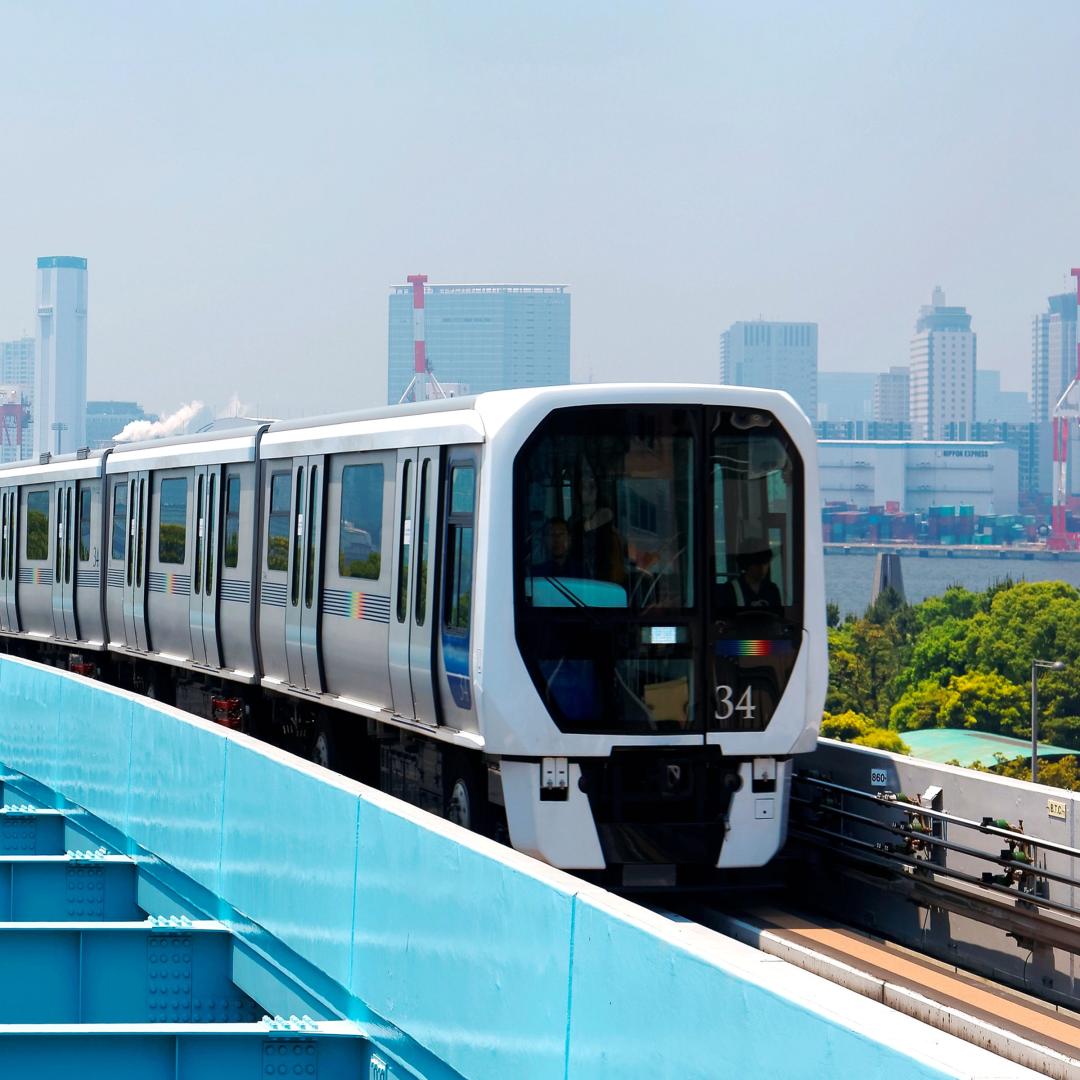AAA. (2024). AAA’s Your driving costs – AAA Exchange. Link to source: https://exchange.aaa.com/automotive/aaas-your-driving-costs/
Adamos, G., Nathanail, E., Theodoridou, P., & Tsolaki, T. (2020). Investigating the effects of active travel in health and quality of life. Transport and Telecommunication Journal, 21(3), 221–230. Link to source: https://doi.org/10.2478/ttj-2020-0018
Blondiau, T., van Zeebroeck, B., & Haubold, H. (2016). Economic benefits of increased cycling. Transportation Research Procedia, 14, 2306–2313. Link to source: https://doi.org/10.1016/j.trpro.2016.05.247
Bonilla-Alicea, R. J., Watson, B. C., Shen, Z., Tamayo, L., & Telenko, C. (2020). Life cycle assessment to quantify the impact of technology improvements in bike-sharing systems. Journal of Industrial Ecology, 24(1), 138–148. Link to source: https://doi.org/10.1111/jiec.12860
Bopp, M., Sims, D., & Piatkowski, D. (2018). Benefits and risks of bicycling. 21–44. Link to source: https://doi.org/10.1016/B978-0-12-812642-4.00002-7
Brand, C., Dons, E., Anaya-Boig, E., Avila-Palencia, I., Clark, A., de Nazelle, A., Gascon, M., Gaupp-Berghausen, M., Gerike, R., Götschi, T., Iacorossi, F., Kahlmeier, S., Laeremans, M., Nieuwenhuijsen, M. J., Pablo Orjuela, J., Racioppi, F., Raser, E., Rojas-Rueda, D., Standaert, A., … Int Panis, L. (2021). The climate change mitigation effects of daily active travel in cities. Transportation Research Part D: Transport and Environment, 93, 102764. Link to source: https://doi.org/10.1016/j.trd.2021.102764
Burnham, A., Gohlke, D., Rush, L., Stephens, T., Zhou, Y., Delucci, M. A., Birky, A., Hunter, C., Lin, Z., Ou, S., Xie, F., Proctor, C., Wiryadinata, S., Liu, N., & Boloor, M. (2021). Comprehensive total cost of ownership quantifications for vehicles with different size classes and powertrains (ANL/ESD-21/4). Argonne National Laoratory. Link to source: https://publications.anl.gov/anlpubs/2021/05/167399.pdf
Center for Sustainable Systems. (2023). Personal transportation factsheet (CSS01-07). University of Michigan. Link to source: https://css.umich.edu/publications/factsheets/mobility/personal-transportation-factsheet
Christensen, L., & Vázquez, N. S. (2013). Post-harmonised european national travel surveys. Proceedings from the Annual Transport Conference at Aalborg University, 20(1), Article 1. Link to source: https://doi.org/10.5278/ojs.td.v1i1.5701
CityTransit Data. (2025). A global analysis of transit data. CityTransit Data. Link to source: https://citytransit.uitp.org/
DeMaio, P. (2009). Bike-sharing: History, impacts, models of provision, and future. Journal of Public Transportation, 12(4), 41–56. Link to source: https://doi.org/10.5038/2375-0901.12.4.3
Department for Transport. (2024). Department for transport statistics NTS 0101: Trips, distance travelled, and time taken: England, 1972 onwards [Dataset]. Link to source: https://app.powerbi.com/view?r=eyJrIjoiMGE2YTQ5YTMtMDkwNC00MjBmLWFkNjUtMjBjZjUzZWU0ZjNmIiwidCI6IjI4Yjc4MmZiLTQxZTEtNDhlYS1iZmMzLWFkNzU1OGNlNzEzNiIsImMiOjh9
European Commission. (2019). Handbook on the external costs of transport. European Commission. Link to source: https://cedelft.eu/wp-content/uploads/sites/2/2021/03/CE_Delft_4K83_Handbook_on_the_external_costs_of_transport_Final.pdf
Federal Highway Administration. (2022). Summary of travel trends: 2022 National Household Travel Survey. US Department of Transportation. Link to source: https://nhts.ornl.gov/assets/2022/pub/2022_NHTS_Summary_Travel_Trends.pdf
Fishman, E., & Schepers, P. (2016). Global bike share: What the data tells us about road safety. Journal of Safety Research, 56, 41–45. Link to source: https://doi.org/10.1016/j.jsr.2015.11.007
Flanagan, E., Lachapelle, U., & El-Geneidy, A. (2016). Riding tandem: Does cycling infrastructure investment mirror gentrification and privilege in Portland, OR and Chicago, IL? Research in Transportation Economics, 60, 14–24. Link to source: https://doi.org/10.1016/j.retrec.2016.07.027
Glazener, A., & Khreis, H. (2019). Transforming our cities: Best practices towards clean air and active transportation. Current Environmental Health Reports, 6(1), 22–37. Link to source: https://doi.org/10.1007/s40572-019-0228-1
Gössling, S., Neger, C., Steiger, R., & Bell, R. (2023). Weather, climate change, and transport: A review. Natural Hazards, 118(2), 1341–1360. Link to source: https://doi.org/10.1007/s11069-023-06054-2
Gössling, S., Choi, A., Dekker, K., & Metzler, D. (2019). The social cost of automobility, cycling and walking in the European Union. Ecological Economics, 158, 65–74. Link to source: https://doi.org/10.1016/j.ecolecon.2018.12.016
Günther, M., & Krems, J. (2022). The liveable city—How effective planning for infrastructure and personal mobility can improve people’s experiences of urban life. 13th International Conference on Applied Human Factors and Ergonomics (AHFE 2022). Link to source: https://doi.org/10.54941/ahfe1002372
International Transport Forum. (2020). Good to go? Assessing the environmental performance of new mobility (Corporate Partnership Board). OECD. Link to source: https://www.itf-oecd.org/sites/default/files/docs/environmental-performance-new-mobility.pdf
International Transport Forum. (2021). ITF Transport Outlook 2021. OECD. Link to source: https://www.itf-oecd.org/itf-transport-outlook-2021
Hymel, K. M., Small, K. A., & Dender, K. V. (2010). Induced demand and rebound effects in road transport. Transportation Research Part B: Methodological, 44(10), 1220–1241. Link to source: https://doi.org/10.1016/j.trb.2010.02.007
IPCC. (2023). Renewable energy sources and climate change mitigation—IPCC. Link to source: https://www.ipcc.ch/report/renewable-energy-sources-and-climate-change-mitigation/
Litman, T. (2011). Environmental reviews & case studies: Why and how to reduce the amount of land paved for roads and parking facilities. Environmental Practice, 13(1), 38–46. Link to source: https://doi.org/10.1017/S1466046610000530
Litman, T. (2024). Evaluating active transport benefits and costs: Guide to valuing walking and cycling improvements and encouragement programs. Victoria Transport Policy Institute. Link to source: https://www.vtpi.org/nmt-tdm.pdf
Mailloux, N. A., Henegan, C. P., Lsoto, D., Patterson, K. P., West, P. C., Foley, J. A., & Patz, J. A. (2021). Climate solutions double as health interventions. International Journal of Environmental Research and Public Health, 18(24), Article 24. Link to source: https://doi.org/10.3390/ijerph182413339
Mizdrak, A., Cobiac, L. J., Cleghorn, C. L., Woodward, A., & Blakely, T. (2020). Fuelling walking and cycling: Human powered locomotion is associated with non-negligible greenhouse gas emissions. Scientific Reports, 10(1), Article 1. Link to source: https://doi.org/10.1038/s41598-020-66170-y
Montoya-Torres, J., Akizu-Gardoki, O., & Iturrondobeitia, M. (2023). Measuring life-cycle carbon emissions of private transportation in urban and rural settings. Sustainable Cities and Society, 96, 104658. Link to source: https://doi.org/10.1016/j.scs.2023.104658
Mueller, N., Rojas-Rueda, D., Cole-Hunter, T., de Nazelle, A., Dons, E., Gerike, R., Götschi, T., Int Panis, L., Kahlmeier, S., & Nieuwenhuijsen, M. (2015). Health impact assessment of active transportation: A systematic review. Preventive Medicine, 76, 103–114. Link to source: https://doi.org/10.1016/j.ypmed.2015.04.010
Münzel, T., Molitor, M., Kuntic, M., Hahad, O., Röösli, M., Engelmann, N., Basner, M., Daiber, A., & Sørensen, M. (2024). Transportation noise pollution and cardiovascular health. Circulation Research, 134(9), 1113–1135. Link to source: https://doi.org/10.1161/CIRCRESAHA.123.323584
de Nazelle, A., Nieuwenhuijsen, M., Antó, J., Brauer, M., Briggs, D., Charlotte Braun-Fahrlander, C., Cavill, N., Cooper, A., Desqueyroux, H., Fruin, S., Hoek, G., Panis, L., Janssen, N., Jerrett, M., Joffe, M., Andersen, Z., van Kempen, E., Kingham, S., Kubesch, N., Leyden, K., Marshall, J., Matamala, J., Mellios, G., Mendez, M., Nassif, H., Ogilvie, D., Peiró, R., Pérez, K., Rabl, A., Ragettli, M., Rodríguez, D., Rojas, D., Ruiz, P., Sallis, J., Terwoert, J., Toussaint, J., Tuomisto, J., Zuurbier, M., & Lebret, E. (2011). Improving health through policies that promote active travel: A review of evidence to support integrated health impact assessment. Environment International, 37(4), 767-777. Link to source: https://doi.org/10.1016/j.envint.2011.02.003
Noussan, M., Campisi, E., & Jarre, M. (2022). Carbon intensity of passenger transport modes: A review of emission factors, their variability and the main drivers. Sustainability, 14(17), Article 17. Link to source: https://doi.org/10.3390/su141710652
Prieto-Curiel, R., & Ospina, J. P. (2024). The ABC of mobility. Environment International, 185, 108541. Link to source: https://doi.org/10.1016/j.envint.2024.108541
Pro Cycling Coaching. (2025). Bike Time Calculator: How Long Does It Take to Bike Any Distance. Link to source: https://www.procyclingcoaching.com/resources/bike-time-calculator
Rodriguez Mendez, Q., Fuss, S., Lück, S., & Creutzig, F. (2024). Assessing global urban CO2 removal. Nature Cities, 1(6), 413–423. Link to source: https://doi.org/10.1038/s44284-024-00069-x
Roser, M. (2024). Data review: How many people die from air pollution? Our World in Data. Link to source: https://ourworldindata.org/data-review-air-pollution-deaths
Seum, S., Schulz, A., & Phleps, P. (2020). The future of driving in the BRICS countries (study update 2019). Institute for Mobility Research. Link to source: https://elib.dlr.de/135710/1/2019_ifmo_BRICS_reloaded_en1.pdf
Shindell, D. T., Lee, Y., & Faluvegi, G. (2016). Climate and health impacts of US emissions reductions consistent with 2 °C. Nature Climate Change, 6(5), 503–507. Link to source: https://doi.org/10.1038/nclimate2935
Staatsen, B., Nijland, H., Kempen, E., van Hollander, A., de Franssen, A., & Kamp, I. (2004). Assessment of health impacts and policy options in relation to transport-related noise exposures (815120002).
State of Colorado. (2016). Economic and health benefits of cycling and walking. Colorado Office of Economic Development and International Trade. Link to source: https://choosecolorado.com/wp-content/uploads/2016/06/Economic-and-Health-Benefits-of-Bicycling-and-Walking-in-Colorado-4.pdf
Statistics Netherlands. (2024). Mobility; per person, personal characteristics, modes of travel and regions [webpage]. Statistics Netherlands. Link to source: https://www.cbs.nl/en-gb/figures/detail/84709ENG
TNMT. (2021). The environmental impact of today’s transport types. TNMT. Link to source: https://tnmt.com/infographics/carbon-emissions-by-transport-type/
Van Acker, V., & Witlox, F. (2010). Car ownership as a mediating variable in car travel behaviour research using a structural equation modelling approach to identify its dual relationship. Journal of Transport Geography, 18(1), 65–74. Link to source: https://doi.org/10.1016/j.jtrangeo.2009.05.006
Verma, S., Dwivedi, G., & Verma, P. (2022). Life cycle assessment of electric vehicles in comparison to combustion engine vehicles: A review. Materials Today: Proceedings, 49, 217–222. Link to source: https://doi.org/10.1016/j.matpr.2021.01.666
Volker, J. M. B., & Handy, S. (2021). Economic impacts on local businesses of investments in bicycle and pedestrian infrastructure: A review of the evidence. Transport Reviews, 41(4), 401–431. Link to source: https://doi.org/10.1080/01441647.2021.1912849
WHO. (2023). Despite notable progress, road safety remains urgent global issue. Link to source: https://www.who.int/news/item/13-12-2023-despite-notable-progress-road-safety-remains-urgent-global-issue
Xia, T., Zhang, Y., Crabb, S., & Shah, P. (2013). Cobenefits of replacing car trips with alternative transportation: A review of evidence and methodological issues. Journal of Environmental and Public Health, 2013(1), 797312. Link to source: https://doi.org/10.1155/2013/797312





